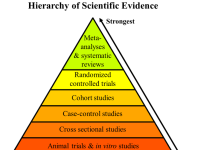The use of computers with young children has long been a contentious issue. But as recent study has demonstrated, technology may really be a useful tool for encouraging young children to engage in crucial skills like play, self-expression, and computational thinking when used properly. In turn, this can encourage future success in all academic fields and assist the preservation of young children’s inherent curiosity. Coding for kids is one area of technology that is gaining popularity among parents and teachers.
The term “coding for kids” refers to the process of instructing young children in the fundamentals of computer programming. It entails dissecting difficult issues into smaller, more manageable chunks, then applying reasoning and problem-solving techniques to come up with answers. Even young children can benefit from learning to code, despite the fact that it may seem like something that only older kids or adults would find useful.
Computational Thinking
In reality, it has been demonstrated that teaching young learners to code provides a lot of advantages. One benefit is that it aids in the development of computational thinking abilities, which are becoming more crucial in today’s digital environment. When tackling problems, computational thinking includes breaking them down into smaller components and applying logic and problem-solving techniques. Children get these abilities by learning to code, and they can use them in a variety of academic fields.
Self-Expression
Kids who learn to code also benefit from the development of their sense of self-expression. Children are effectively acquiring a new language when they learn to code. This language gives individuals the freedom to express themselves in novel and imaginative ways, and it can aid in their identity and self-confidence development. Also, teaching kids to code can aid in the development of a growth mindset, which is the attitude that mistakes and failures are opportunities for improvement rather than a cause for shame or disgrace.
The Need for Balance
Of course, it’s crucial to keep in mind that technology should never take the place of interpersonal interactions or practical learning opportunities. Instead, it ought to be utilized as a tool to boost the learning of kids by enhancing these experiences. For instance, parents and teachers might use technology to design interactive learning activities that inspire children to solve problems and think creatively. They might also employ technology to give kids ways to express themselves, like by making music or art on a computer.
The U.S. Department of Education has created a variety of materials to assist parents and teachers in making the most of these technologies after realizing the potential advantages of using technology with young children. For instance, the Office of Educational Technology at the Department has produced a manual titled “Families and Educators Guide to Early Learning in a Digital Age” that offers advice on how to use technology with young children. The manual stresses the need of using technology in a deliberate and thoughtful manner and provides helpful advice for incorporating it into children’s educational experiences.
The guide’s main lesson is that technology should never take the place of interpersonal communication. Instead, parents and teachers should embrace technology to improve the educational opportunities for kids and give them more freedom to explore and learn. For instance, teachers may employ technology to develop interactive learning experiences that motivate youngsters to solve problems and think creatively. They might also employ technology to give kids ways to express themselves, like by making music or art on a computer.
Ultimately, there are many complex factors to take into consideration while using technology with young children. While there are undoubtedly advantages to utilizing technology with young children, there are also dangers and difficulties that need to be considered. Parents and teachers may ensure that young children are able to develop the skills and competencies they need to succeed in today’s digital environment by cooperating and using technology in a thoughtful and intentional way. The goal is to always keep children’s needs and interests at the forefront and to utilize technology in a responsible manner, whether it be through coding for kids or other types of technology-based learning.
The Value of Supervision
The potential for abuse or overuse while utilizing technology with young children can be a problem for parents and educators. It’s crucial to keep in mind that young kids still require a lot of practical, real-world experiences to develop their social, emotional, and physical abilities. These critical developmental processes can be hampered by excessive screen usage, which can also be harmful to kids’ health and wellbeing.
Parents and educators should establish clear rules for technology use as well as routines and limits for screen time in order to reduce these risks. For instance, they might set a daily screen time limit for kids or designate certain hours for tech-related activities. Also, they might pick kid-friendly apps, games, and other online materials that fit kids’ interests and educational requirements.
Stay Current
The requirement to stay current with the newest trends and technologies presents another difficulty that parents and educators may have while utilizing technology with young children. Keeping up with the latest technological advancements might be difficult because the field is always changing. But, parents and teachers may collaborate to make sure that young children have access to the finest learning opportunities by staying informed and learning from one another.
In Summary
it should be noted that the use of technology with young children is a complex subject that calls for considerable thought and preparation. Technology may be a powerful tool for teaching young children important skills like play, self-expression, and computational thinking when used deliberately and intentionally. The goal is to always put children’s needs and interests in the forefront and to utilize technology in a way that supports their healthy development and well-being, whether it be through coding for kids or other forms of technology-based learning.
It is our duty as educators and parents to assist our kids in acquiring the knowledge and abilities necessary to thrive in the modern digital environment. Together, we can make sure that young children have access to the best learning opportunities and may realize their full potential by utilizing technology in a deliberate and responsible manner.



















